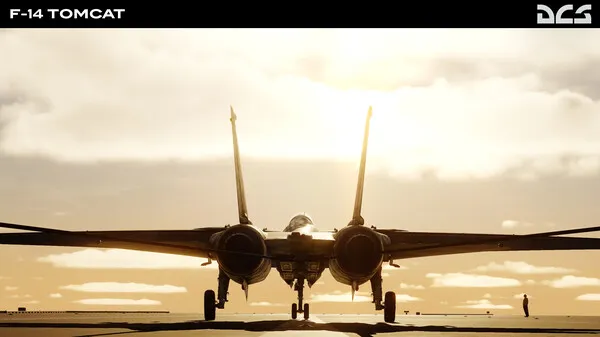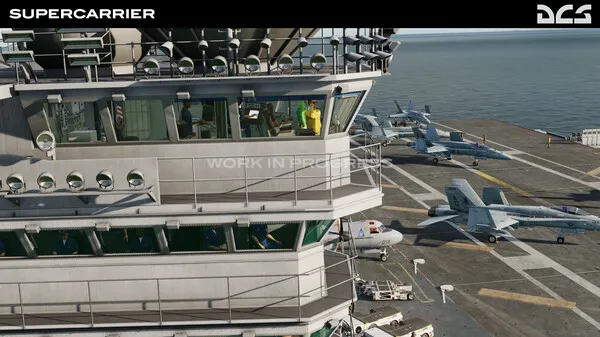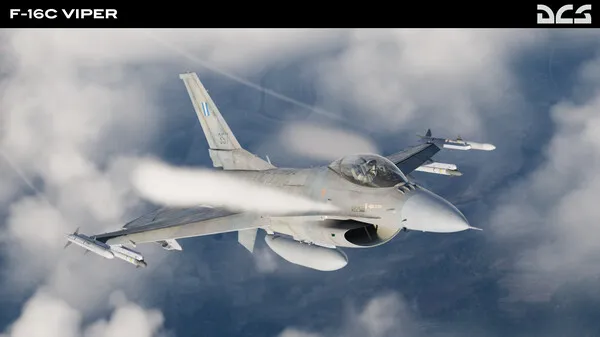DCS World Steam Edition is renowned for its high-fidelity flight simulation, offering players an immersive experience with detailed aircraft systems, realistic physics, and expansive terrain. However, a persistent issue has emerged among users with high-end hardware: stuttering during gameplay caused by texture streaming from disk. Despite powerful CPUs, GPUs, and SSDs, players report sudden frame drops and micro-freezes, especially when flying over complex terrain. This article explores the root causes of this bottleneck, its impact on performance, and potential solutions—organized into ten detailed sections that follow the timeline of a typical gameplay session.
- Recognizing the Stuttering Symptoms Stuttering in DCS World often manifests as brief freezes or frame drops during flight. These interruptions typically occur when flying over dense terrain or transitioning between map zones. Players with RTX 4070 GPUs, 32GB RAM, and NVMe SSDs still experience these issues.
The stuttering is not constant but appears during texture loading events. Monitoring tools show spikes in disk activity, suggesting that terrain textures are being streamed inefficiently from compressed archives.
Common Symptoms:
- Sudden frame drops during flight
- Micro-freezes when changing altitude or direction
- Disk activity spikes during stutters

- Investigating Texture Archive Behavior DCS World stores terrain textures in compressed .zip archives such as landTexturesSummer.zip. . During gameplay, these files are accessed and decompressed in real time, placing strain on disk I/O and CPU resources.
Even with NVMe SSDs, decompression latency can cause stuttering. The game does not preload all textures into RAM, relying instead on dynamic streaming. This design choice prioritizes storage efficiency but compromises performance.
Key Files Involved:
- landTexturesSummer.zip
- ausasus.surface5
- seasonal texture packs
- CPU and I/O Bottlenecks Texture decompression is CPU-intensive. Players with Intel i9-13900K CPUs still report stuttering, indicating that even top-tier processors struggle with real-time decompression during flight.
The CPU handles both flight simulation logic and I/O operations. When texture streaming spikes, CPU cores are diverted from simulation tasks, causing frame drops. Disabling CPU core parking has shown mixed results.
Performance Observations:
- High CPU usage during texture loads
- Core parking may exacerbate stutters
- Simulation thread competes with I/O thread
- RAM and Page File Pressure DCS World can consume more than 32GB of RAM during extended sessions. When physical memory is exhausted, Windows resorts to the page file, increasing disk access and worsening stuttering.
Players monitoring Task Manager report committed memory exceeding 32GB, especially with multiple modules and high terrain detail. Increasing virtual memory size may help, but it’s not a complete fix.
Memory Tips:
- Monitor committed RAM during gameplay
- Increase page file size manually
- Close background apps to free memory
- SSD Performance and Fragmentation While NVMe SSDs offer fast read speeds, performance can degrade due to fragmentation or thermal throttling. DCS World’s texture streaming is sensitive to disk latency, and even minor delays can cause stutters.
Players should ensure their SSDs are defragmented (for SATA drives), have adequate cooling, and are not overloaded with background tasks. Using dedicated game drives may reduce contention.
SSD Optimization:
- Use NVMe drives with high IOPS
- Keep SSDs below 80% capacity
- Monitor drive temperature during gameplay
- VRAM Usage and GPU Streaming DCS World uses a hybrid memory model, streaming textures between system RAM and GPU VRAM. When VRAM is full, textures are swapped from RAM, increasing latency. GPUs with less than 12GB VRAM may struggle.
Players with RTX 4070 (12GB VRAM) report stuttering during terrain transitions. Upgrading to GPUs with 16GB+ VRAM or lowering texture quality may reduce streaming delays.
VRAM Tips:
- Monitor VRAM usage with MSI Afterburner
- Lower terrain texture settings
- Use GPUs with 16GB+ VRAM for smoother streaming

- Terrain Mods and Custom Maps User-installed terrain mods can exacerbate stuttering. These mods often use high-resolution textures or unoptimized archive formats, increasing disk load. Some mods bypass DCS’s texture streaming logic entirely.
Players should test performance with and without mods. Official maps like Syria and Persian Gulf are optimized better than community-created ones. Mod authors should follow Eagle Dynamics’ packaging guidelines.
Mod Management:
- Disable terrain mods during troubleshooting
- Use official maps for benchmarking
- Check mod archive formats for efficiency
- Monitoring Tools and Diagnostics Using tools like MSI Afterburner, Process Explorer, and Windows Resource Monitor can help diagnose stuttering. Track disk I/O, CPU usage, and memory pressure during gameplay to identify bottlenecks.
Log performance during specific flight paths to isolate problem areas. Share diagnostic data with the community or Eagle Dynamics to assist in patch development.
Diagnostic Tips:
- Use MSI Afterburner for VRAM and FPS tracking
- Monitor disk I/O with Resource Monitor
- Log stutters and correlate with terrain zones
- Community Workarounds and Tweaks Players have developed workarounds such as unpacking texture archives manually, increasing preload radius, and adjusting terrain detail settings. These tweaks reduce streaming load but may increase RAM usage.
Editing config files like autoexec.cfg and graphics.lua can improve performance. However, these changes are unofficial and may break after updates. Always back up files before modifying.
Workaround List:
- Unpack texture archives to reduce decompression
- Increase preload radius in config files
- Lower terrain detail settings for smoother performance

- Developer Response and Future Fixes Eagle Dynamics has acknowledged streaming-related stuttering in forum posts. While some patches have improved performance, the core issue of disk-based texture streaming remains unresolved.
Players hope for future updates that implement RAM-based caching, better multithreading, and improved archive handling. Until then, community tweaks and hardware optimization remain the best solutions.
Developer Notes:
- Partial fixes released in recent patches
- No full resolution for texture streaming yet
- Community feedback remains active
Conclusion DCS World Steam Edition’s texture streaming bottleneck is a complex issue rooted in archive handling, CPU load, and disk latency. Even high-end systems struggle with stuttering during terrain transitions due to real-time decompression and inefficient memory management. By understanding the problem and applying targeted optimizations, players can reduce stuttering and enjoy smoother flights. Continued community feedback and developer support are essential for long-term resolution.

















